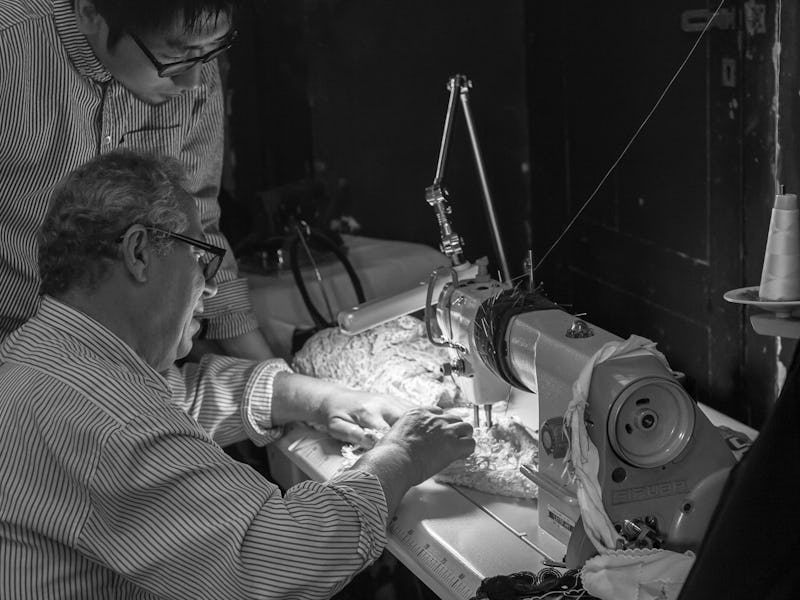An 1860 Story on the Sewing Machine Reminds Us of the Hard Labor It Saved
It's the anniversary of the Isaac Singer patent that changed work in America.

Today in 1851, Isaac Singer patented the first practical and mass-produced sewing machine, which straight changed the lives of the working class. You know you’re on to something when even that luddite Gandhi says of your machine: “It is one of the few useful things ever invented and there is a romance about the device itself.”
An 1860 New York Times story recounts the competing inventors who’d recognized the same need, like Mark Zuckerberg hovering above the latter day Friendsters and MySpaces. But beyond the competition to dominate the lucrative home-sewing market — which people were willing to spend more than a fifth of their annual income to enter — this ancient daily feature recognizes the device relieved a crossing-the-Sahara endless torture of menial labor. Everyone’s a futurist lately, but the 19th century Times report shows journalists exploring the same themes of technology’s ripples in our lives and industries in ways familiar to anyone reading a think-piece about Uber in 2015. (Pardon the question marks, all sic’d from the Times archive.)
The use of the sewing-machine has already become far more extensive than the most sanguine anticipated. They are common in the family, and fully supply the wants of the needle in the household, and have income indispensable to the dressmaker, tailor, [???]tress, and manufacturers of ready-mule clothing, ships and collars, skirts, hats, caps, ladies’ gaiters, boors, shoes, harnesses and upholstery; and every other manufactory, where the needle and thread are used, has been benefited by this invention, Many few branches of industry have been created, and their pursuit rendered highly remunerative. A shirt manufactory in New-Haven, Ct., uses 500 of the lockstitch machines. In Troy, N.Y., and vicinity, upwards of 3,000 of the same class of machines are employed to making shirts and collars.
The time saved in manufacturing different articles of clothing is an important item. The sewing upon a gentleman’s shirt can be accomplished with ease in one hour upon a first-class sewing machine. It would take 14 hours of close and weary application to do the same by hand. A pair of pantaloons and be made in one hour by the machine, that would take a smart seamstress five hours to make. A frock-coat requiring 17 hours of constant work by hand, can be made with a machine in three hours. Seams of considerable length are ordinarily sewed with the best machines, at the rate of a yard a minute, and that too in manner far superior to hand sewing, besides being more healthy for those engaged. Saving of time superiority in work and healthfulness, are three strong commendations.
It also disrupted the economy far more gently than a lot of recent startups. Keep in mind this story was filed only nine years after Singer was awarded his patent.
Contrary to the predictions of many on the first introduction of sewing machines, the sewing girls — those whom necessity compels in cam their [???]d by the use of the needle — have been greatly benefited by this invention. Thousands of them have found better remuneration and lighter toil it is no uncommon thing for those who, toiling night and day, could earn only one or two dollars per week, to now receive from three to ten dollars per week for operating a sewing machine two-thirds as many hours, and with lighter labor. Indeed, many girls who own their machines have earned more than ten dollars per week.
Ten dollars a week! A ransom for someone accustomed to earning just one or two. Singer knew the dull edge of long hours at a rote task. He worked as ditch digger, among a fistful of other trades, before hitting it rich. He also invented the first installment payment plan, which put his invention in reach of average Americans who couldn’t otherwise blow $125 of a $500 annual income on a Singer machine. True it paved the way for menial labor on an industrialized scale, but that’s another story altogether. At best it saved the sanity of millions of people who just wanted to be able to get dressed properly, including whoever had to stitch together the baby clothes for Singer’s 24 children. Dude loved to love, you know?